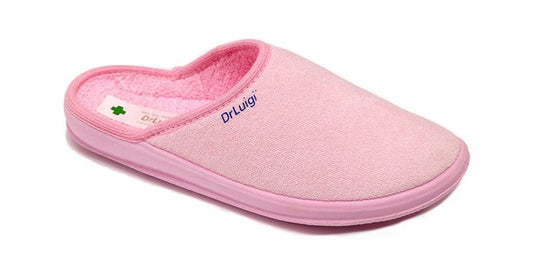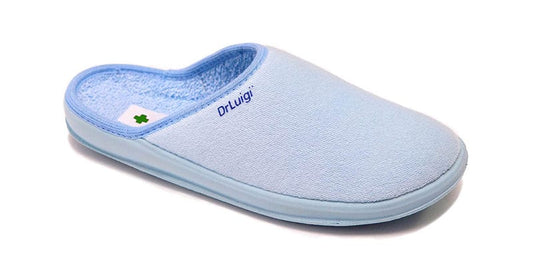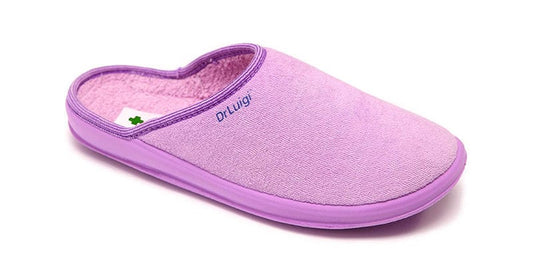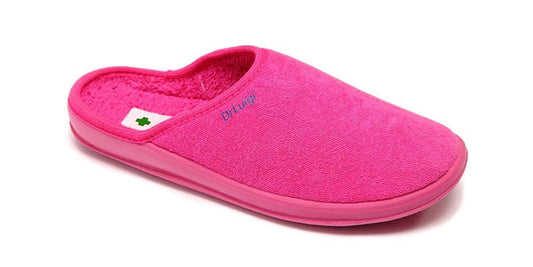Anatomy of the heel
The heel, like the foot, has a very complex anatomical structure. Anatomically, the foot can be divided into three parts. The back part (lat. tarsus). The bones of the foot consist of the heel bone (lat. os calcaneus), ankle bone (lat. os talus), cone bone (lat. os naviculare), cube bone (lat. os cuboideum) and three wedge bones (lat. ossa cuneiforme). Then comes the middle part of the foot (lat. metatarsus), which is made up of five bones of the foot, and the front part, which is made up of fourteen toes (lat. phalanges). All parts are connected by numerous ligaments, joints, and muscles. The heel bone (lat. calcaneus) is the bone of the back part of the foot. It is connected to the ankle bone (talus) and cuboid bone (os cuboideum) via a joint. The heel bone is the largest bone in the foot, and on it we distinguish the following important structures. The tuber calcanei or heel tubercle on the lower edge contains lateral and medial processes. They serve as starting points for the musculus abductor hallucis and musculus abductor digiti minimi. In addition, on the upper side there is also a grip of the Achilles tendon.
Possible causes of heel pain
- Tendinosis is a chronically inflamed tendon. Achilles tendinosis is another name for overuse injury. Microdamage causes structural deterioration and function loss. Microdamages result from constant, jerky movements. Sports can cause Achilles tendinosis. Achilles’ heel is also the same thing as Achilles inflammation. Achilles’ heel derives from legend. Achilles’ only susceptible portion was his heel, according to folklore. Achilles’ mother didn’t bathe his heel in the Styx. Only Achilles’ heel could be injured. Injuries to the tendon, which is the strongest in the body, are common, giving the phrase Achilles’ heel a figurative meaning of weakness despite strength. Sports, aging, improper footwear, and intense exercise can injure the Achilles tendon. Rapid-movement athletes are injury-prone. Short-distance runners, soccer, handball, boxing… Adjusting training intensity to the sport is key. Intensive weekend sports, when the body can’t “warm up,” are risky for the Achilles tendon. Men in their 40s who only do sports on weekends commonly get Achilles tendon soreness. Because their body doesn’t have time to adapt, injuries arise. “Weekend warriors” describe such patients. Besides training intensity, consider the walking and running surface. Asphalt isn’t good for long-term running and causes Achilles and plantar fascia stress. Uneven terrain is better for running than flat ground because it works the foot’s muscles more. Sometimes footwear causes injury. Flat, worn-out shoes don’t support the arches, encourage heel valgus, and poor posture. Footwear affects foot health and body posture. DrLuigi makes comfortable, functional shoes. Tendons become weak and inelastic as tissues age. Quick, uncontrolled movements might tear the Achilles tendon in the elderly. Achilles tendinosis causes pain during walking, running, and exercising. The pain begins with the action, dissipates or reduces throughout it, and returns after resting. Morning stiffness and soreness disappear as the feet are stretched..

- Sever’s disease – Damage to cartilage is the root cause of Sever’s disease, a childhood disorder. Cartilage injury can be caused by excessive pressure on the heel bone (calcaneus). The heel bone is responsible for causing injury. The heel bone, in particular, forms from two separate pieces joined together during development. The cartilaginous section of the bone is replaced by the bony part of the bone after the eighth year of life. The heel’s outside rim is the site of the discomfort. Those children who participate in sports may have a swollen heel as a result of this condition. However, an x-ray of the heel is required to rule out a fracture, even if cartilage damage will not show up on the x-ray. When symptoms are severe, a plaster cast is needed, although an insole in the shoe usually suffices to alleviate the strain on the heel bone.
- Fracture of the heel bone – Injuries to the heel bone can be caused by various factors like osteoporosis, heavy impact, or years of repetitive stress. Rehabilitation and physical therapy are essential components of care for patients who have suffered a heel bone fracture, which can take a very long time to heal. A walker or walking stick can help ease the pressure on an injured foot.
- Tarsal Canal Syndrome -The posterior tibial nerve travels through the connective-bony tarsal canal, which can lead to a painful condition known as tarsal canal syndrome. When the passageway becomes excessively congested, pressure is placed on the nerve, causing discomfort. The discomfort is localized to the middle of one’s heel. Walking or standing causes more pain, but as the disease progresses, sitting or lying down can also be painful. Care is administered in a manner analogous to that used for bursitis. In the early stages, pain is treated by injecting corticosteroids and anti-inflammatory medicines in an effort to reduce inflammation and its associated symptoms. If this doesn’t work, surgical decompression is performed to ease the nerve’s path through the tarsal canal.

- Heel bursitis, wherein the fluid-filled sac known as a bursa becomes inflamed and causes pain. A bursa is the sac between the heel skin and the Achilles tendon. Women are more likely to experience pain than males, but guys are not immune to the condition. The inflammation is made worse by the tight, hard shoes. When these shoes are worn for extended periods of time, the swelling becomes hardened. When a bursa becomes inflamed, it can be very painful to walk, and the skin around the affected area may become red and warm. Wearing shoes that do not put pressure on the heel is the first line of defense, but if the discomfort persists, an injection of corticosteroids or anti-inflammatory medicines into the bursa may be necessary.
- Haglund’s heel - a frequent malformation. Soft tissues behind the heel bone enlarge or a new bony protrusion form where the Achilles tendon attaches. Upper calcaneus (heel bone) might be a pad or a square. People’s shapes vary. People with a square upper heel bone experience pain from inflexible heel parts. Hard tennis shoes, boots, and high heels have rigid heel parts. High heels cause inflammation of the mucous sac, or bursitis. Mucus minimizes friction between tendon and heel bone. Long-term inflammation thickens the mucus sac. Pain, swelling, and too-small shoes are common complaints. Due to a bony protrusion. Sometimes the skin color changes above thicker structures. Adolescent ladies or sportsmen who like hard tennis shoes are prone to Haglund’s heel. Teenage ladies at risk for Haglund’s heel due to high heel use. Haglund’s heel is also related to the Achilles tendon sheath, therefore the person may limp. Limping harms the feet and lower legs.
- Plantar fasciitis – Overuse injury promotes plantar fascia deterioration. Plantar fascia connects to the heel bone and toe joints. Middle fascia is more injury-prone. Fasciitis causes heel and back pain. Morning pain normally disappears with exercise and mobility. “Nail in the heel” pain is common. After 40, it’s common. Usually unilateral, fasciitis affects both sexes. External and internal factors produce fasciitis. External factors include hard and inflexible soles, worn-out shoes, intensity fluctuations, and uneven terrain. Pes cavus, lowered feet, heel valgus are internal reasons. Marathoners are prone to fasciitis. Running on uneven ground reduces plantar fascia damage. Physical therapy, surgery, and splinting can treat plantar fasciitis. Surgical treatment includes fasciotomy, which can be done endoscopically with minimum tissue stress and a speedy recovery. Physical treatment uses workouts, ultrasound, and cryotherapy. Night splints are a novel treatment. Night splints hold the foot at right angles to the shin. During the night, the foot is pointed downward, shortening the plantar fascia. The longette’s neutral foot position prevents morning discomfort. This treatment isn’t common.





